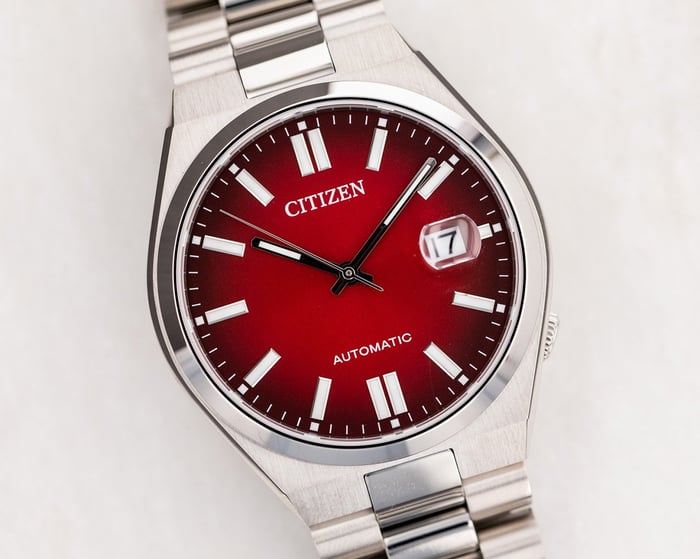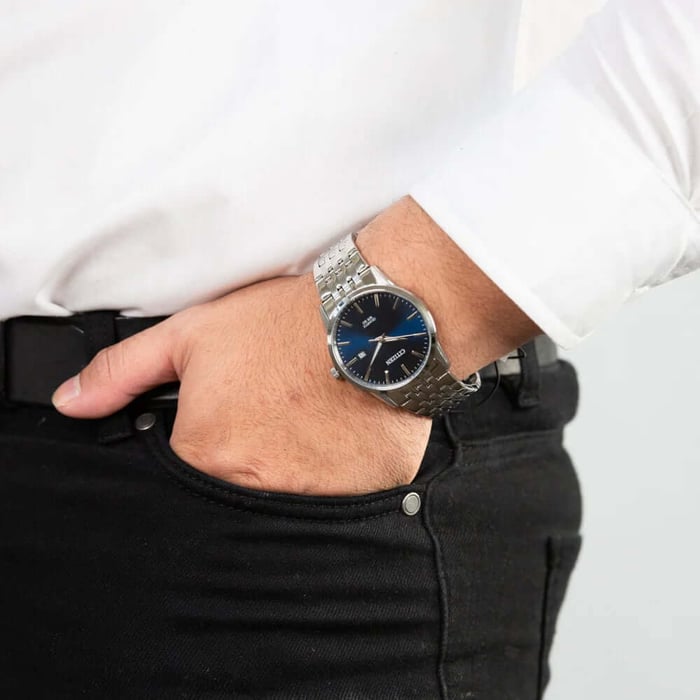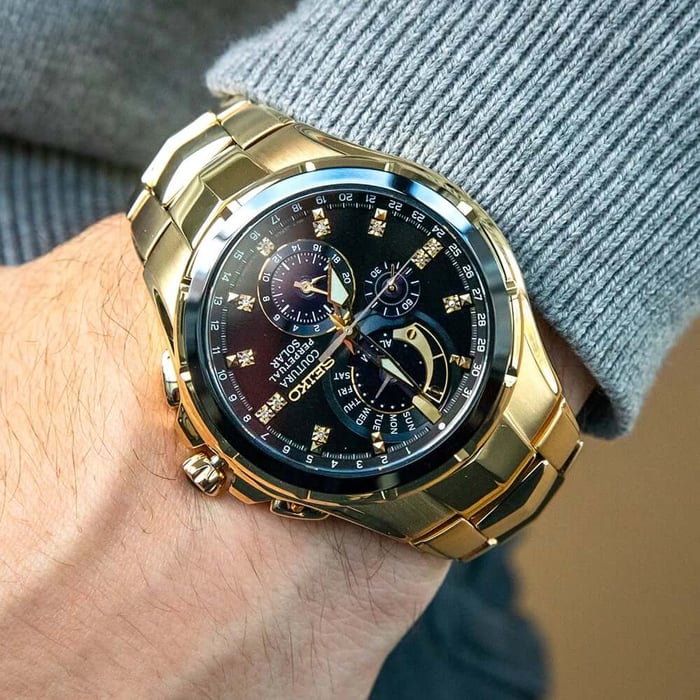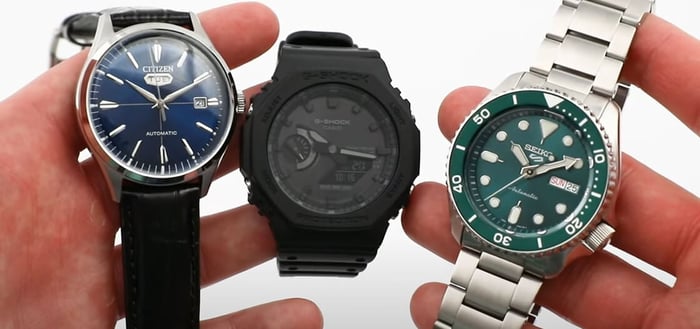Watches are more than meets the eye. Most wearers immediately gravitate towards a flashy dial, shiny bracelet or features that reflect shades of their personality. Despite this being the case, there’s more to consider than just looks.
One of the most crucial elements of a nice timepiece can immediately be narrowed down to the cogs that turn inside of it, commonly referred to as the watch movement. Whether you are chasing precision, tradition or sustainability – it is important that, as a watch wearer, you understand the stark differences each of the three main mechanisms possess.
It’s the hidden engine that keeps your watch running, playing a big role in its accuracy, how much upkeep it needs, as well as how it suits your day-to-day life. So, whether you opt for an automatic, quartz or solar operating watch, all offer different and uniquely special propositions for any wearer.
This article looks to break down each type of movement, explore the pros and cons, as well as recommend which one to possibly consider and set your eyes on for your next purchase.
Table of Contents
Automatic Watch Movement: The Tradition of Horology
Still to date the most complex and intricate basis of watch movements on the market – the automatic movement was one that trailblazed the wristwatch industry. Prior to the 20th century, wristwatches were viewed as a female accessory, with pocket watches taking the forefront of how men time-kept.
This was until, in 1904, Brazilian aviator Alberto Santos-Dumont was frustrated with the impracticality of a pocket watch and wanted to be able to tell the time hands-free. Being friends with Louis Cartier (founder of Cartier), the first ever men’s wristwatch—the Cartier Santos—was born, blossoming into the industry we know today.
But the same sentiment remains true: even to this day, despite all modern technology, people still view automatic movements as the grail of watchmaking. Much like one may treasure a unique piece of art over something that is mass-produced, automatic movements are known for their craftsmanship and the fact that man-hours went into creating what you are wearing on your wrist.

How It Works
Automatic watches are defined by the characteristic that they are mechanical. They run off kinetic energy—whether that be through self-winding using the crown or from the movement of the user’s wrist. Inside the case is a tiny, intricate arrangement of springs, gears and rotors that, when all combined, allow for the watch to tick.
Different watches have different movements though! Something like the popular Seiko Presage range has a 41-hour power reserve—meaning, from the time of winding the watch enough to the point of it ticking, it will last for 41 hours before it stops entirely.
Liken this to the $25,000 Rolex Cosmograph Daytona, and it has a 72-hour power reserve—hence why all movements are made differently.
The best comparison I can draw is a music box. You wind it, and it continuously plays music until it eventually stops, when you need to rewind it again.
Why Choose Automatic?
There are two main reasons—besides the previously stated prestige, horology and craftsmanship—for choosing an automatic watch: longevity and the fact that they don’t require a battery.
The longevity factor is one many are drawn toward. If you invest in the right watch and maintain it well enough, it can become a family heirloom. Passing watches down through the generations isn’t uncommon at all and is something a lot of people consider when spending a lot of money on a timepiece. The reason you’re able to do this with an automatic watch and not a quartz one is that the mechanism inside a quartz watch is only meant to last a few decades (20–30 years approximately), whereas automatic watches, in theory, can last multiple generations.
Reasons Not to Go for an Automatic
The primary reason consumers may steer clear of automatics is due to their precision. Depending on the accuracy of the watch movement, your watch may gain or lose several seconds per day. What this means is that, as the hand rotates and operates the movement, it is almost impossible to maintain 100% precision for the entire time it ticks until its power reserve extinguishes. As a result, there will be slight inaccuracies even if you set the time exactly right. Thankfully, it’s only a few seconds a day and doesn’t tend to phase many watch wearers.
The final con is the constant winding and resetting. For many wearers who don’t necessarily wear their watch many days of the week, this is viewed as an issue.
What I say is that, for the upside of these watches—not only in the far superior build quality compared to their quartz and solar counterparts—this process doesn’t take long at all. Between winding as well as resetting the date and time, for me it takes all of 2 minutes at a time—if that.
Quartz Watch Movements: The Modern Form of Timekeeping
How It Works
Much simpler in their manufacturing, in simple terms, quartz watches are battery-powered. They use a tiny quartz crystal to keep time—opposed to the many moving parts of an automatic movement. The battery sends electricity through the crystal, making it vibrate precisely 32,768 times per second. These vibrations are measured and converted into a steady pulse that moves the watch hands. It’s because of this electrical current that quartz watches are seen in most timekeeping devices today—including wall clocks, digital watches, and more.
The quartz movement is, to this day, the most accurate form of keeping time, despite being developed in 1969.
The first commercial quartz wristwatch was made and developed in 1969 by Seiko and, to this day, is still by far the most groundbreaking invention in the watch world.
Why Choose Quartz
The three immediate things that draw people to quartz are the price point, easy maintenance, and precise accuracy. If it’s things like ease of wear and not paying much attention to the finer details, maybe quartz is a better proposition than that of an automatic watch.
The quartz watch market thrives in bridging the gap between people who wear watches as an occasional accessory and entry-level wearers, to those that avidly collect and take pride in what they put on their wrist.
Me personally, I love having one quartz piece in my collection that I can just slap on whenever, or if there’s a watch that I don’t mind taking a bit of a beating. The beauty of it is, if you look carefully enough, you can find an absolute gem of a quartz watch through brands like Timex, Citizen, Casio and Seiko to fill this void.
The cons are obviously that it’s never going to be an automatic. Many collectors deem quartz watches a tier below due to their lack of tradition.
Going back to my artwork analogy from before—would you frame a piece of art perfectly replicated down to the detail by artificial intelligence, or does the beauty in an artwork come from the fact it was made by another human being? That’s like comparing the two.
Solar Watch Movements: Placing Priority on the Environment
Now, despite not being all that different from a quartz watch, I still thought solar watches were worth a notable mention. Instead of using a traditional battery, these watches run off a solar cell to convert light (natural or artificial) into energy. This gives the battery a longer lifespan—meaning less battery waste at the hands of watchmaking, which is a wonderful initiative.
More and more watch manufacturers are taking this onboard, catering to a younger audience who have climate at the forefront of their minds when it comes to consumerism. Citizen and Seiko are two notable names worth mentioning in this instance.

How It Works
Once the light hits the dial of the watch, energy is stored in a rechargeable power cell, which can keep the watch running for months—even in total darkness—much like a solar panel would. Besides that, it may as well be identical to a quartz watch.
Although I already covered the pros and cons of quartz watches, the eco-friendly aspect is a nice extension to consider when choosing to opt for a solar movement.
The main con is, obviously, that if it doesn’t receive light, it doesn’t work. These batteries are designed to need light to function. It’s not like there’s an on/off switch deciding when to use solar energy. The easiest way to avoid this is by leaving it out in the open—even if it’s under a bedroom light—so it’s getting some kind of light source. That will ensure your watch is ready to go and working at all times.
Summary: Which Watch Movement Is Right for You?
If you value precision and low maintenance, quartz is a clear and affordable choice. For those drawn to craftsmanship, legacy, and longevity, automatic watches offer timeless appeal—quite literally. Meanwhile, solar watches provide an eco-friendly, practical middle ground with the reliability of quartz and fewer battery changes.
Ultimately, the right movement comes down to your lifestyle, values, and how involved you want to be in the upkeep of your watch. Whether you want a daily wear piece, a collector’s item, or an environmentally conscious option, there’s a movement out there that’s perfectly suited to you.












